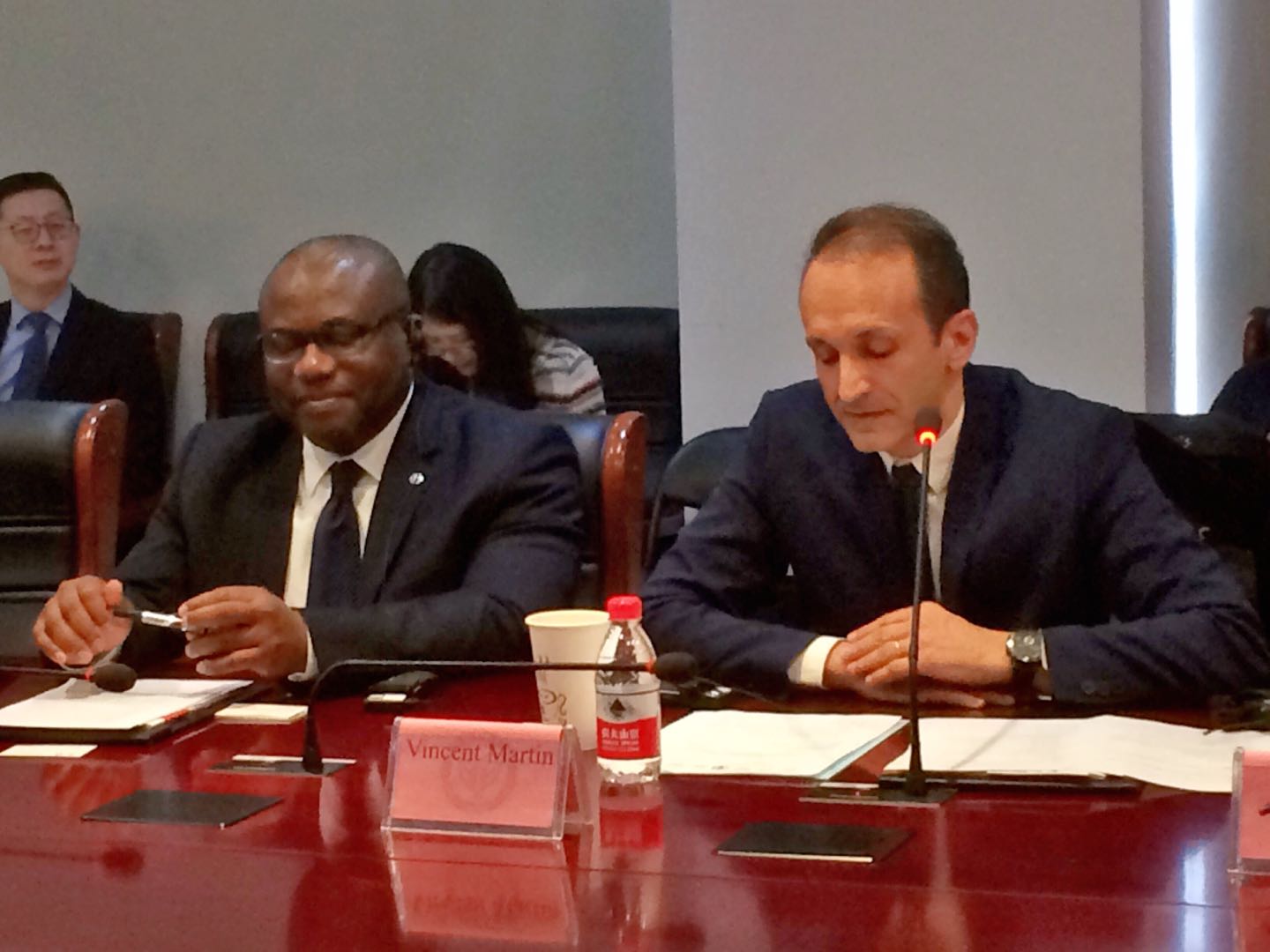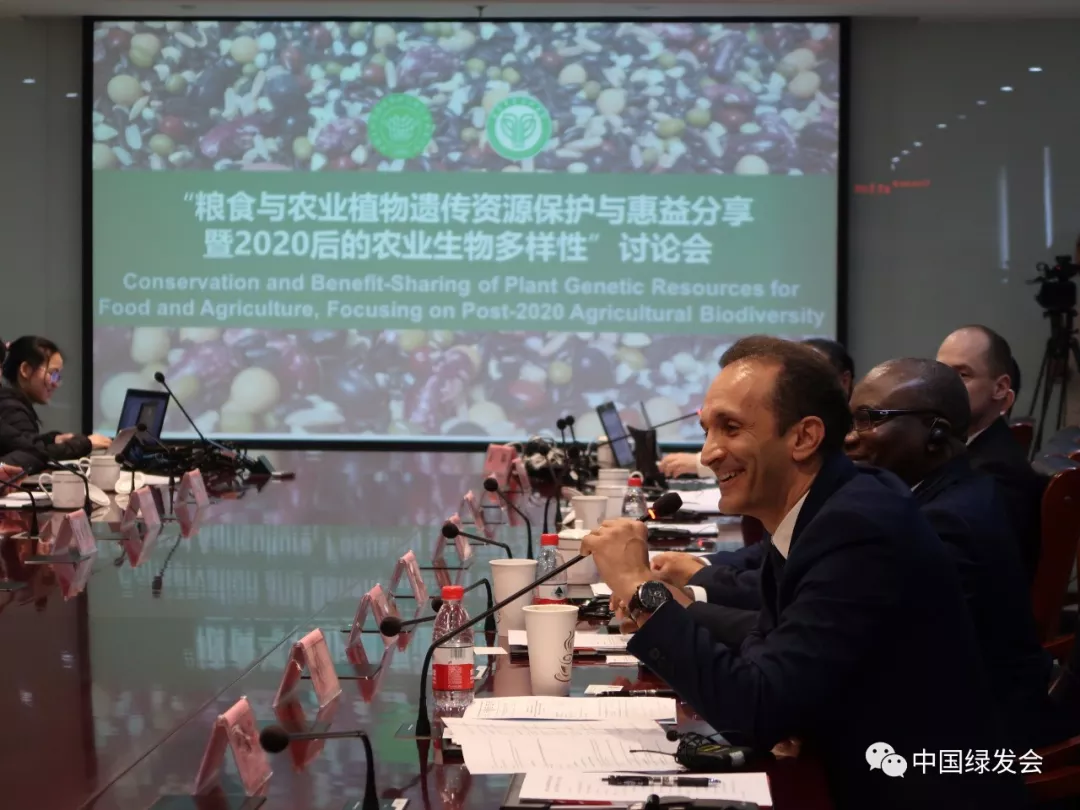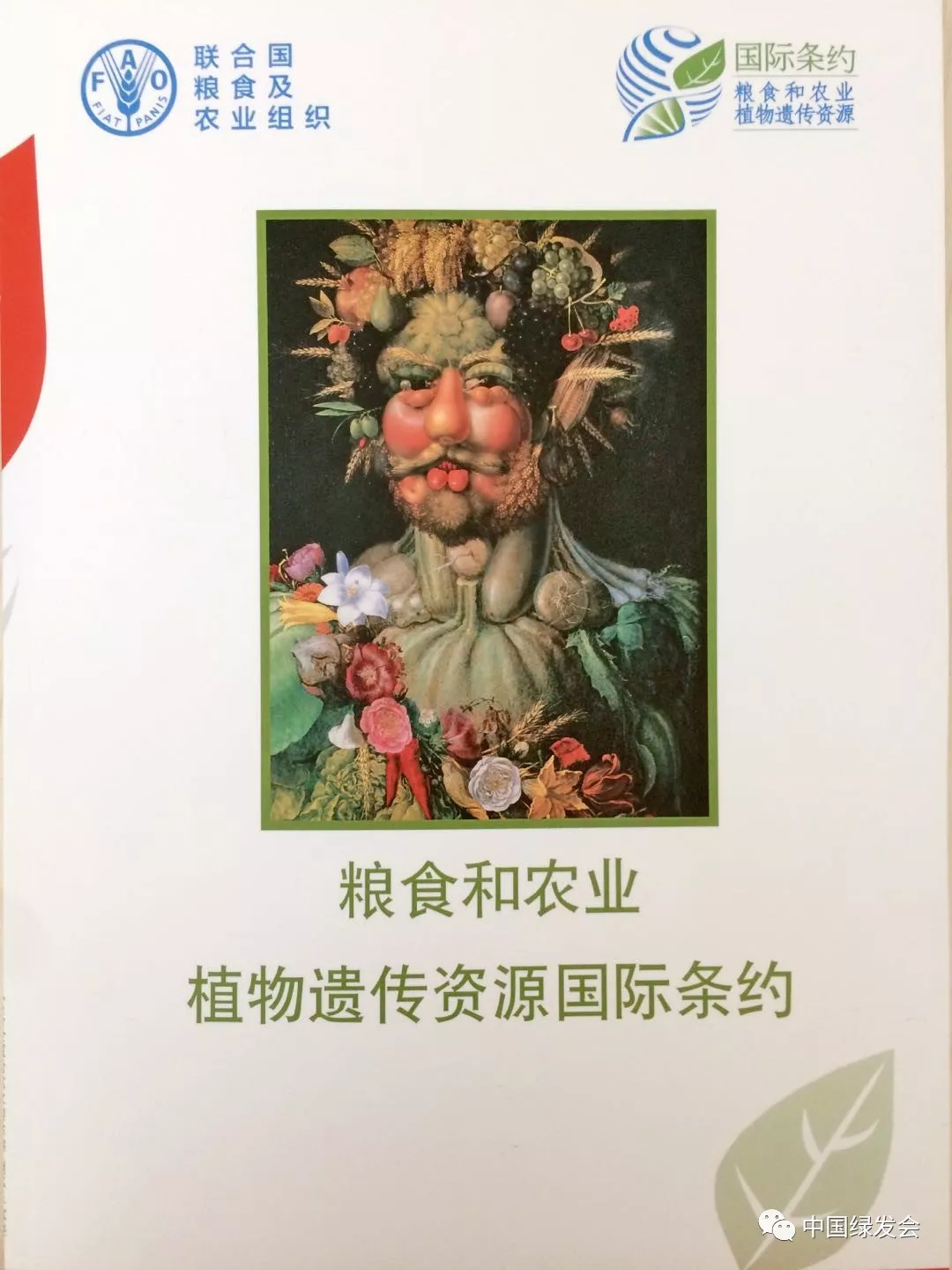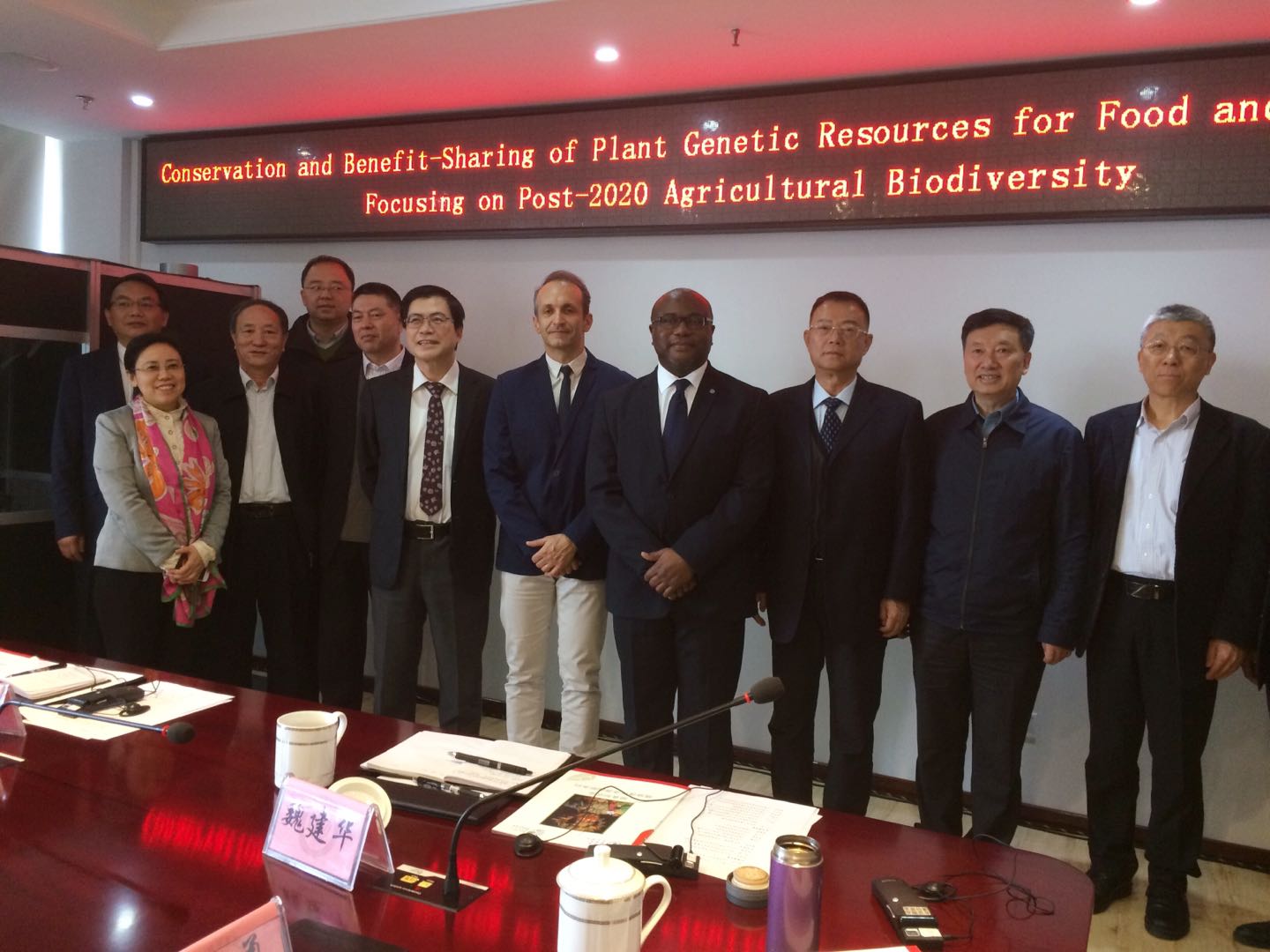After careful preparation, on March 4th, the Seminar themed on “Conservation and Benefit Sharing of Plant Genetic Resources for Food and Agriculture, Focusing on Agricultural Biodiversity After 2020” co-organized by China Biodiversity Conservation and Green Development Foundation (CBCGDF) and Beijing Academy of Agricultural and Forestry Sciences (BAAFS) was finally successfully held in Beijing. Attendees at home and abroad include officials from the Food and Agriculture Organization (FAO) of the United Nations, heads of relevant departments of the Ministry of Agriculture and Rural Affairs, heads from CBCGDF and BAAFS, as well as representatives from scientific research institutions and universities such as Beijing Genomics Institute (BGI), Beijing Forestry University, China Agricultural University, Chinese Academy of Agricultural Sciences, Beijing Academy of Agricultural and Forestry Sciences, etc.
Everyone gathered together to promote China’s conservation and benefit sharing of plant genetic resources for food and agriculture, promote China’s agro-ecological security and biodiversity conservation, and effectively participate in global environmental governance. At the same time, attendees from various fields also made suggestions on the Fifteenth meeting of the Conference of the Parties of the United Nation's Convention on Biological Diversity (CBD COP15), which will be held in Kunming, Yunnan Province, China in late 2020. To this end, it is planned to hold a special meeting this summer to discuss the issues related to hosting side events on agriculture and biodiversity conservation during the CBD COP15.
Among the FAO officials attending the meeting, including FAO Representative in China and DPR Korea Dr. Vincent Martin. In the opening speech, he first expressed his appreciation briefly in Chinese, followed by a brief introduction about the functions of FAO. He also elaborated the status quo of FAO’s contact with China, and the FAO’s International Treaty on Plant Genetic Resources for Food and Agriculture (ITPGRFA) in an incision way. He ended his speech with the expression that in terms of China’s development and status as a big country, China is welcome to join the International Treaty. Here, the speech of Dr. Martin is organized into Chinese as follows to share with readers:
Did you know that, of some 6000-plant species cultivated for food, less than 200 contributed to global food output, and only 9 such as sugarcane, maize, rice, wheat, potato, soybean etc. accounted for 66% of total crop products? The trend is toward uniformity – although the world is producing more food than that in the past, it is relying on ever-expanding monocultures.
It’s more worrying that the biodiversity is crucial for our food and agriculture is disappearing by the day. FAO, under guidance of Commission of Genetic Resources for Food and Agriculture, launches first ever global report on the state of biodiversity that underpins our food systems.
Biodiversity and ecosystem services are indispensable for sustainable production in the agriculture sector. They are necessary for the provision of food and other agricultural products, and for sustaining the livelihoods of those who depend on them. Biodiversity also contributes to maintaining ecosystem health, addressing climate challenges and combatting land degradation.
Today, the foundation of our Food System is under threat. The natural resources that underpin the food and agriculture sector are already under pressure: one-third of agricultural land is degraded, agriculture uses 70 percent of all water withdrawal, and the sector is a major contributor to the global greenhouse gas emissions. The acceleration in productivity growth that is needed to provide for a growing population is hampered by the degradation of natural resources and climate change.
We need to change our practices:
- growing interest by governments
- slowly changing
o sustainable forest management
o sustainable fisheries
o agro-ecology
· Less biodiversity means that plants and animals are more vulnerable to pests and diseases. In the case of plant genetic resources for food and agriculture, genetic erosion is taking place as a result of land clearing, population pressure, overgrazing, and environmental degradation and changing agricultural practices. A lot more remains to be done in terms of identification, dereferencing, characterization, and inventory of plant genetic resources, as well as the conservation and sustainable use of them.
· The FAO International Treaty on Plant Genetic Resources for Food and Agriculture is a key corporate instrument that provides a legally binding international framework for conserving, sustainably using and equitably sharing the benefits from crucial plant genetic resources, in harmony with the Convention on Biological Diversity, while recognising Farmer′s Rights.
· The Treaty’s goals to conserve, use and exchange of genetic diversity are crucial to the achievement of FAO’s Strategic Objectives.
· The International Treaty also directly contributes to the achievement of SDG 2 – promoting sustainable agriculture and working to end hunger, and of SDG 15 – halting the loss of crop biodiversity. In addition, the activities, programs and projects supported by the International Treaty also contribute towards achieving SDG 5 – working to achieve gender equality, SDG 13 – supporting projects that combat climate change, and SDG 1 – working to end poverty.
· Through its Multilateral System of Access and Benefit-sharing, the Plant Treaty provides a global platform that enables countries to access the plant diversity they need to develop new varieties so they can address future needs and withstand future environmental challenges regarding food and nutrition security. These include large collections of rice, wheat, maize and potato, and other food and agricultural crops and forages of importance for China.
· It entered into forced 15 years ago and currently has 145 countries and the European Union as members. Most Asian countries are members of the International Treaty, the latest ratification was by Mongolia in December 2018, and Japan is currently coordinating the region. The next meeting of the Governing Body of the Treaty will take place in Rome in November 2019.
· At present, FAO in China is managing 7 on-going GEF projects in support of biodiversity conservation in farmland, water, lake, forest, mountain, and wetland ecosystem, supported by GEF project portfolio with a total funding of 27 million USD. Under GEF 6, FAO will be supporting the conservation and sustainable use of crop genetic resources in the Rice Production Area (Yunnan Province), Millets and Oats Production Area (Hebei Province) and Soybeans Production Area (Liaoning/ Heilongjiang Provinces). With the 7th GEF replenishment starting in 2018, an Impact Program on Food Systems, Land Use and Restoration is also under development with a target budget of 15 million USD and an objective of biodiversity conservation in agricultural system.
· At FAO, we stand ready to continue working with China and member countries to promote multi-stakeholder, cross-sectoral and international cooperation in support of biodiversity conservation, including at genetic levels. Given the strong commitment from China, as well as China’s growing international role, we would like to invite and encourage China consider joining this enabling agreement of International Treaty on Plant Genetic Resources for Food and Agriculture.
With this, I wish the Seminar a complete success. Thank you for your attention.

(Photo credit: FAO)



Before the meeting, Dr. Martin and ITPGRFA Secretary Mr. Kent Nnadozie, co-organizers of the seminar, Dr. Zhou Jinfeng (second from left), Secretary-General of China Biodiversity Conservation and Green Development Foundation (CBCGDF), and Dean of Beijing Academy of Agricultural and Forestry Sciences (BAAFS) (first from right) exchanged views.


https://v.qq.com/x/page/x135985lffd.html
Video remarks in details: Welcome China to join ITPGRFA (photos and video credit: CBCGDF, please indicate the source.)
(Welcome to follow CBCGDF Wechat account ChinaGreenExpress, more exciting content in this seminar will be offered.)
Original Chinese article:
http://www.cbcgdf.org/NewsShow/4937/7832.html
By / Niu Jingmei
